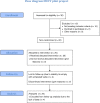Sustained Increase of 25-Hydroxyvitamin D Levels in Healthy Young Women during Wintertime after Three Suberythemal UV Irradiations-The MUVY Pilot Study
- PMID: 27434043
- PMCID: PMC4951026
- DOI: 10.1371/journal.pone.0159040
Sustained Increase of 25-Hydroxyvitamin D Levels in Healthy Young Women during Wintertime after Three Suberythemal UV Irradiations-The MUVY Pilot Study
Erratum in
-
Correction: Sustained Increase of 25-Hydroxyvitamin D Levels in Healthy Young Women during Wintertime after Three Suberythemal UV Irradiations-The MUVY Pilot Study.PLoS One. 2017 Jan 3;12(1):e0169709. doi: 10.1371/journal.pone.0169709. eCollection 2017. PLoS One. 2017. PMID: 28046111 Free PMC article.
Abstract
Objectives: Vitamin D (VitD) deficiency is a health problem prevalent not only in the elderly but also in young adults. The primary objective of our observational pilot study "MUVY" (Mood, UVR, Vitamin D in Young women) was to test both the short-term and long-term effects of a series of three suberythemal UV radiation (UVR) exposures on the VitD status and well-being of young healthy women during winter in a repeat measure design.
Methods: 20 healthy young women (Fitzpatrick skin types I-III, aged 21-25 years) received three full body broad band UVR exposures with an escalating erythemally weighted dose schedule during one week in winter, and completed self-report questionnaires monitoring symptoms of depression (Beck Depression Inventory, BDI) and affective state/well-being (Profile of Mood States, POMS) at baseline and three days after the last UVR exposure. 25-hydroxyvitamin D (25(OH)D) and 1,25-dihydroxyvitamin D (1,25(OH)2D) were measured in serum at baseline, and at study days 8, 36 and 50.
Results: Mean baseline 25(OH)D level was 54.3 nmol/L (standard deviation (s.d.) = 24.1), with seven women having VitD deficient status. Relevant symptoms of depression, as indicated by low BDI total scores (0-8), were absent. After the three UVR exposures the increment of 25(OH)D was an average of 13.9 nmol/L (95% confidence interval (CI) = 9.4-18.4) and 26.2 pmol/L (95%CI = 7.2-45.1) for 1,25(OH)2D. Δ25(OH)D, and corresponding baseline levels were significantly and inversely associated (rho = -0.493, p = 0.027). Only 25(OH)D remained significantly increased above baseline for at least six weeks after the last UVR exposure. A strong inverse correlation of the POMS subscale "Vigor/Activity" and the increment in 1,25(OH)2D was found (rho = -0.739, p<0.001) at day 8.
Conclusions: Three suberythemal whole body UVR exposures during one week are a simple and suitable method for improving 25(OH)D levels during winter, for at least six weeks, and especially in young women with VitD deficient status.
Trial registration: German Clinical Trials Register (Deutsches Register Kinischer Studien) DRKS00009274.
Conflict of interest statement
The authors have declared that no competing interests exist.
Figures




References
-
- Holick MF. Sunlight and vitamin D for bone health and prevention of autoimmune diseases, cancers, and cardiovascular disease. Am J Clin Nutr. 2004;80(6 Suppl):1678S–88S. . - PubMed
-
- Norman AW, Silva FR. Structure function studies: identification of vitamin D analogs for the ligand-binding domains of important proteins in the vitamin D-endocrine system. Rev Endocr Metab Disord. 2001;2(2):229–38. . - PubMed
Publication types
MeSH terms
Substances
LinkOut - more resources
Full Text Sources
Other Literature Sources
Medical

